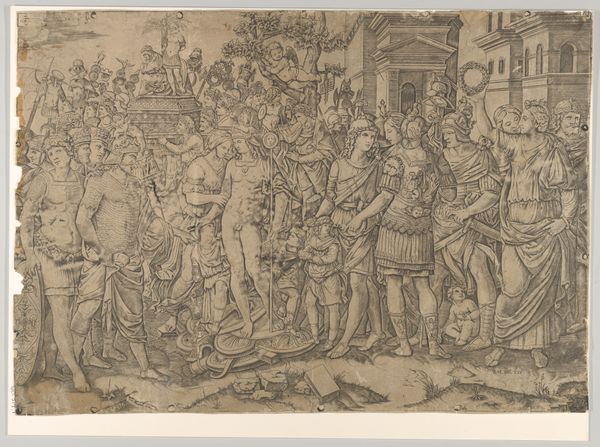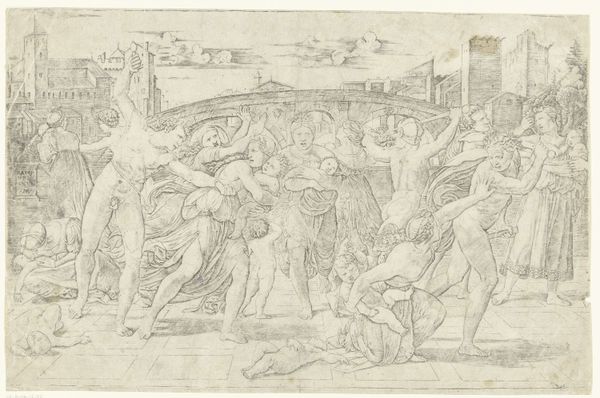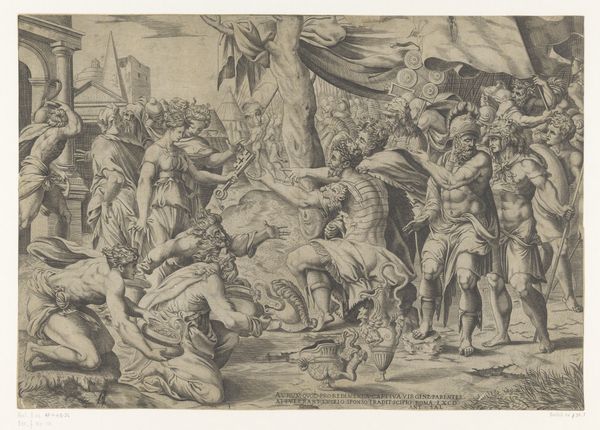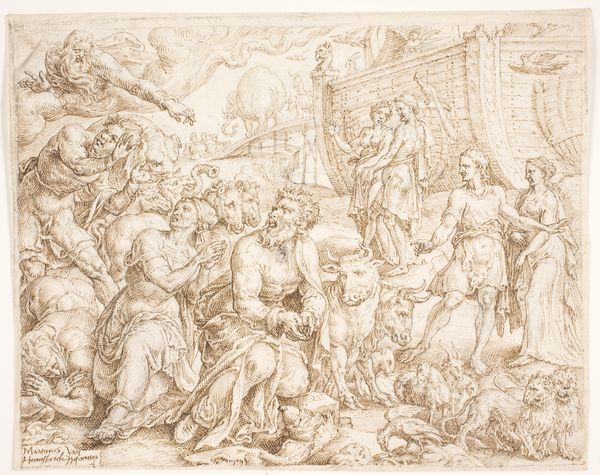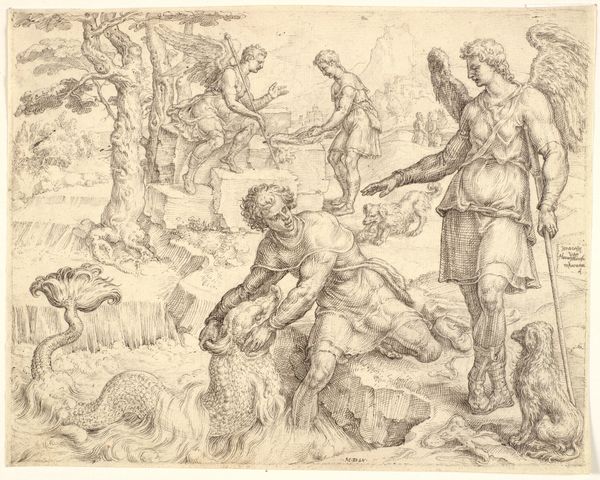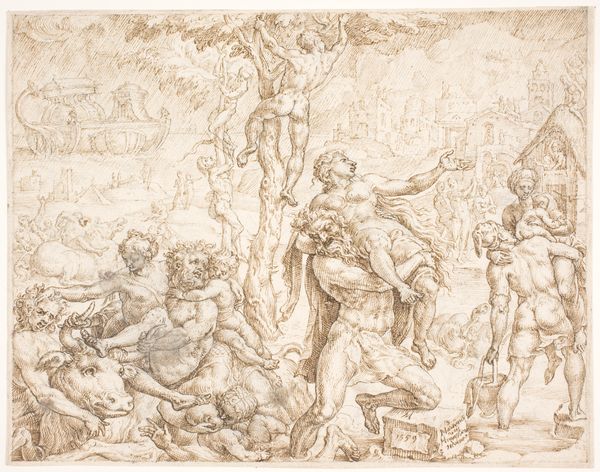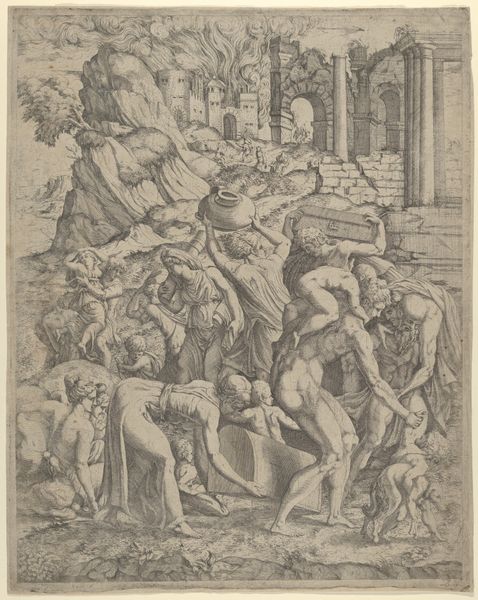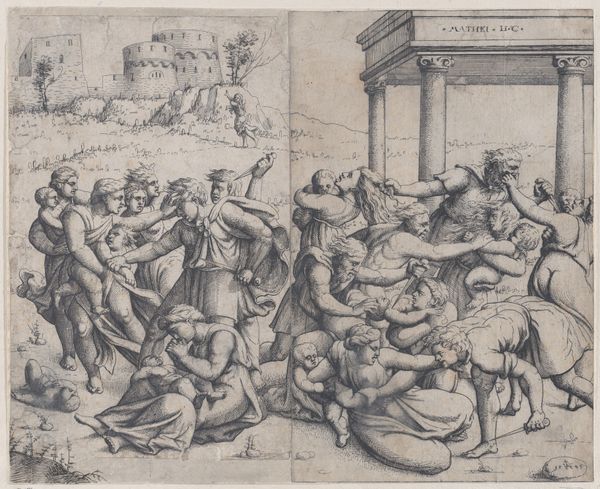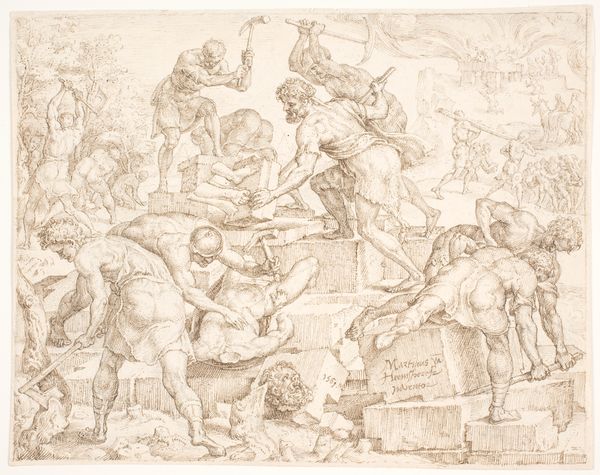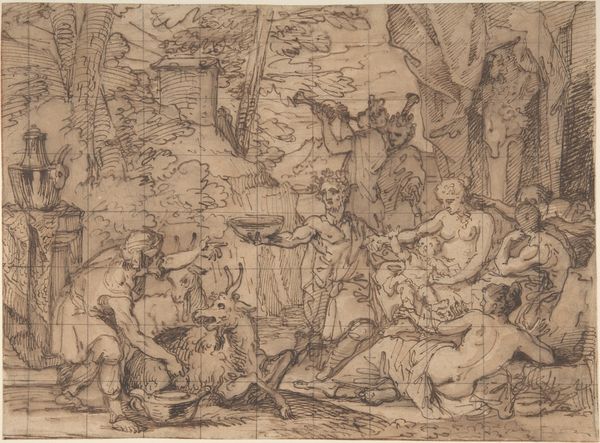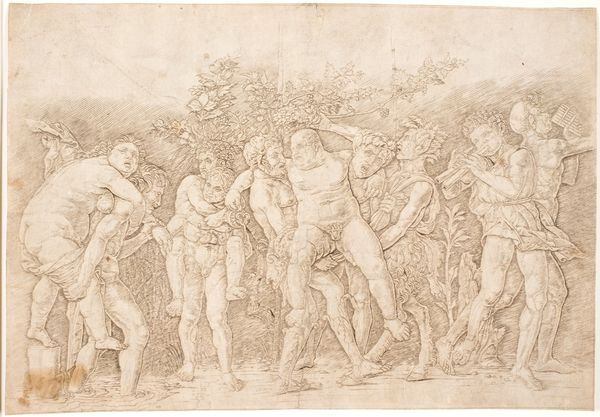
Triomftocht van Romeinse keizer met soldaten en buitgemaakte wapenrustingen, 70 1510 - 1527
0:00
0:00
marcantonioraimondi
Rijksmuseum
drawing, print, ink, pen, engraving
#
drawing
#
ink drawing
#
narrative-art
#
pen drawing
# print
#
pen sketch
#
classical-realism
#
figuration
#
ink
#
pen
#
history-painting
#
academic-art
#
italian-renaissance
#
engraving
Dimensions: height 345 mm, width 492 mm
Copyright: Rijks Museum: Open Domain
Curator: This remarkable piece housed here at the Rijksmuseum is "Triumph of a Roman Emperor with Soldiers and Captured Arms," created between 1510 and 1527 by Marcantonio Raimondi. Executed in pen and ink, it is both drawing and print, a fantastic example of Italian Renaissance engraving. Editor: My initial reaction? Intricate! It feels like a glimpse into an incredibly busy and celebratory ancient world, rendered with such painstaking detail it almost feels… alive? The shading creates this almost sculptural effect too, despite it being just ink on paper. Curator: Absolutely. It's essential to remember the socio-political context of the Renaissance when we view such a work. The interest in classical antiquity wasn't just aesthetic. It was intertwined with power, legitimacy, and empire. Depicting Roman triumphs allowed Renaissance rulers to align themselves with the perceived glory of Rome. Editor: You're right, that almost performative aspect is compelling. Look at the central figure, presumably the Emperor – the idealized male nude is front and center – while the spoils of war are almost secondary to him. It’s like the artwork isn't really about victory at all, but is about demonstrating control through artful staging, if you catch my drift. Curator: Precisely! And that nudity serves several purposes. It reflects classical ideals of beauty and strength, obviously, but also a vulnerability, perhaps intended to disarm or humanize the emperor within this display of overwhelming military strength. Editor: Humanizing the figure. Fascinating idea. Though if I was in that conquered army, vulnerability would be the LAST word on my mind. Curator: But think of the intended audience, who most likely knew something about the concepts within humanist scholarship! They may have read classical histories of Roman emperors. How the figure is composed contributes to a message about political power, rather than battlefield dominance, Editor: So art and political aspirations intertwined, much like they often do. Now, looking at the details...those legions look particularly cramped, shoulder to shoulder marching… feels very propagandistic now. Curator: Which in itself raises questions about how the power structures in our contemporary cultures operate, too. Whose triumphs do we celebrate now? Editor: Oh, that's a weighty question that maybe only art can attempt to express in a sensitive way. Thank you for the illuminating historical view, that shifted things. Curator: And thank you for injecting that much-needed bit of irreverence. It's good to always challenge the "triumphs," and the established narratives, after all.
Comments
No comments
Be the first to comment and join the conversation on the ultimate creative platform.
